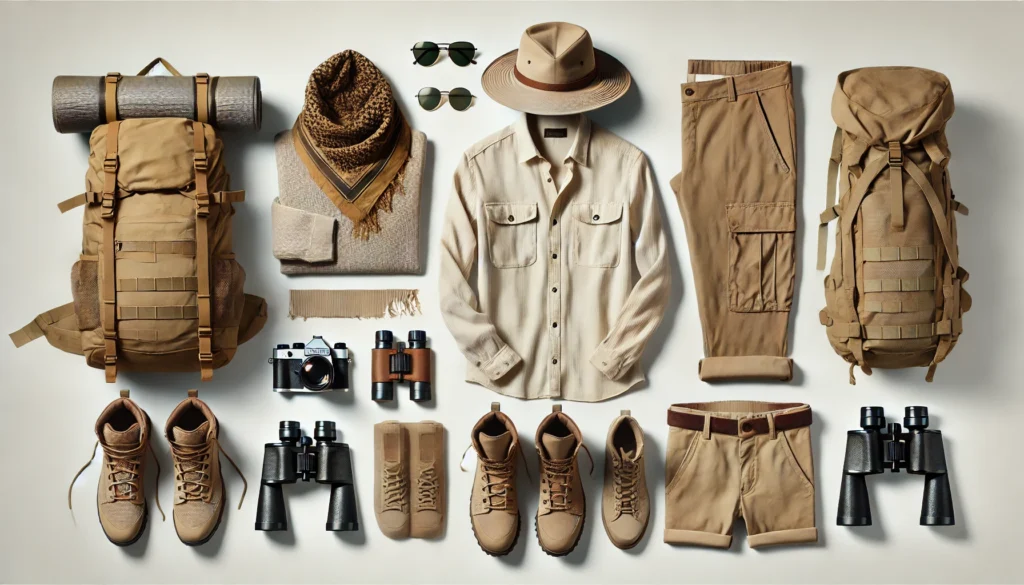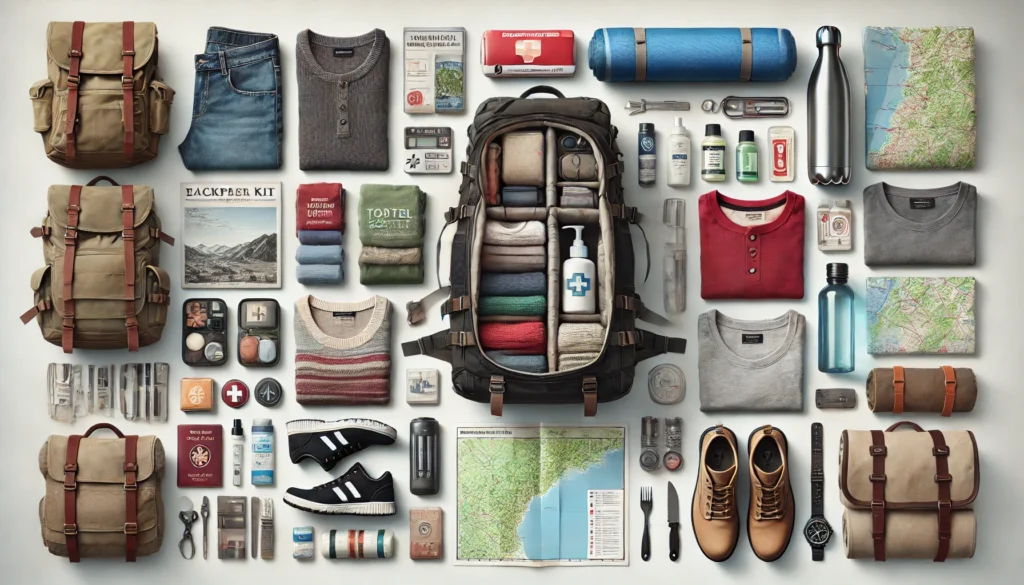What to wear on safari for backpackers needs more prep than you might first think. Clothes colours, material and style are just some of the few things you need to consider.

What to Wear on Safari in Kenya: A Backpacker’s Guide
Going on a safari in Kenya is a dream come true for many backpackers. The country’s rich biodiversity, including the Big Five and stunning landscapes, makes it a prime destination for wildlife enthusiasts. However, preparing for a safari involves more than just booking your trip and packing your camera.
What to wear on safari for backpackers can significantly impact your comfort and safety. Here’s an in-depth guide on what to wear on a safari in Kenya.
Understanding the Safari Environment
Climate and Weather
Kenya’s climate varies depending on the region and time of year. Generally, the country experiences two main seasons:
- Dry Season (June to October): Characterised by sunny days and cooler evenings. It’s the best time for game viewing as animals gather around water sources.
- Wet Season (November to May): Features short and long rains, with lush landscapes and more challenging travel conditions.
Terrain
Safari terrains range from open savannahs and dense bushlands to riverine forests. You’ll encounter dusty roads, potential mud during the rainy season, and varying temperatures between day and night.
Essential Clothing for Safari – Choosing What to Wear on Safari for Backpackers

Tops and Jackets
- Lightweight, Long-Sleeved Shirts: These provide protection from the sun and insects. Choose neutral colours like khaki, brown, and green to blend in with the environment and avoid attracting insects.
- Moisture-Wicking T-Shirts: Ideal for layering, especially during warmer days.
- Fleece or Warm Jacket: Essential for early morning and evening game drives when temperatures can drop significantly.
- Rain Jacket: Lightweight and waterproof, crucial during the wet season to keep you dry.
Bottoms
- Convertible Pants: These are practical as they can be converted into shorts during the heat of the day.
- Cargo Pants: Offer durability and multiple pockets for carrying essentials.
- Leggings or Athletic Pants: Comfortable for women, particularly for those long drives and walks.
Footwear
- Sturdy Hiking Boots: Necessary for walking safaris and offering support and protection.
- Comfortable Sneakers: Good for general wear and shorter walks.
- Sandals: Useful for relaxing at the camp or lodge.
Accessories and Extras on the List of What to wear on Safari for Backpackers
Hats and Headwear
- Wide-Brimmed Hat: Provides ample sun protection for your face and neck.
- Cap or Beanie: Useful for cooler mornings and evenings.
Sunglasses
- Polarised Sunglasses: Reduce glare and protect your eyes from the sun.
Scarves and Buffs
- Lightweight Scarf or Buff: Protects against dust and can keep you warm during chilly drives.
Socks and Underwear
- Moisture-Wicking Socks: Keep your feet dry and comfortable.
- Breathable Underwear: Quick-drying and comfortable for long days.
Special Considerations
Insect Protection
- Insect-Repellent Clothing: Consider clothing treated with insect repellent or bring insect repellent spray/cream.
- Long Sleeves and Pants: Wearing long sleeves and pants can help prevent insect bites, especially in the evenings.
Sun Protection
- High SPF Sunscreen: Essential for protecting your skin from the intense African sun.
- Lip Balm with SPF: Protects your lips from drying out and getting sunburned.
Layering
- Layering Strategy: Mornings and evenings can be cold, while midday can be hot. Layering allows you to adjust your clothing according to the temperature.
Packing Tips for Backpackers

Minimalist Packing
- Versatile Clothing: Pack items that can be mixed and matched to create different outfits.
- Quick-Drying Fabrics: Choose clothing made from quick-drying materials for ease of washing and wearing.
- Packing Cubes: Use packing cubes to organise your clothes and make packing and unpacking more efficient.
Essential Gear
- Daypack: A small backpack for daily essentials like water, snacks, camera, and binoculars.
- Water Bottle: Stay hydrated by carrying a reusable water bottle.
- Camera Gear: Don’t forget your camera, extra batteries, and memory cards to capture those incredible wildlife moments.
- Binoculars: Essential for spotting wildlife from a distance.
What Not to Wear
Bright Colours and Camouflage
- Avoid Bright Colours: Bright colours can attract unwanted attention from insects and may disturb wildlife.
- No Camouflage: In many African countries, including Kenya wearing camouflage is reserved for the military, so it’s best to avoid it to prevent misunderstandings.
Dark Colours
- Dark Clothing: Dark blue and black can attract tsetse flies, which are known to bite and can transmit diseases.
Heavy Fabrics
- Bulky and Heavy Fabrics: Avoid heavy materials that can make you uncomfortable in the heat.
Conclusion on What to Wear on Safari for Backpackers
Choosing the right clothing for your safari in Kenya is crucial for ensuring comfort, safety, and an overall enjoyable experience. Opt for lightweight, breathable, and versatile clothing that can be layered to adapt to the changing temperatures. Neutral colours will help you blend in with the environment and avoid attracting insects.
By following these guidelines, you’ll be well-prepared to make the most of your Kenyan safari adventure as a backpacker. Happy travels!
We hope this article helped you learn about What to Wear on Safari for Backpackers in Kenya. You may also want to see our article on Best Things to Do in Nairobi for Backpackers.
If you liked this article, then please subscribe to our YouTube Channel for entertaining videos and more. You can also find us on Facebook, Instagram, TikTok, Pinterest and X (Twitter).


